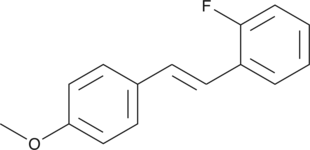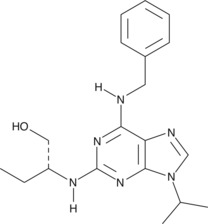Description
An antagonist of NR2B subunit-containing NDMA receptors (Kd = 4.2 nM); selective for NR1/NR2B-containing NMDA receptors over NR1, NR2A, and NR2B subunits alone and NR1/NR2A receptors in HEK293 cell homogenates; suppresses mechanical hyperalgesia following carrageenan challenge in rats (30 mg/kg, s.c.); inhibits licking behavior in rats induced by capsaicin and PMA (ED50s = 7.5 and 5.7 mg/kg, respectively); reverses haloperidol-induced catalepsy in rats (ED50 = 0.4 mg/kg); temporarily improves parkinsonian symptoms in an MPTP model of Parkinson’s disease in rhesus monkeys
Formal name: 4-hydroxy-αS-(4-hydroxyphenyl)-βS-methyl-4-phenyl-1-piperidineethanol
Synonyms: CP 98,113
Molecular weight: 327.4
CAS: 134234-12-1
Purity: ≥98%
Formulation: A crystalline solid
Product Type|Biochemicals|Ion Channel Modulation|Blockers||Product Type|Biochemicals|Receptor Pharmacology|Antagonists||Research Area|Neuroscience|Neurodegenerative Disorders|Parkinson’s Disease||Research Area|Neuroscience|Pain Research



